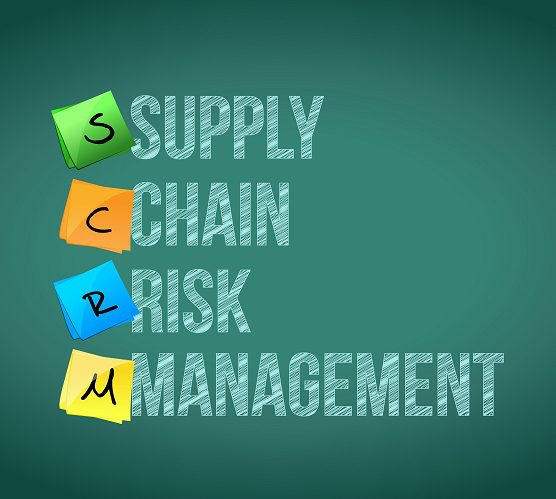Supply Chain Risk Management And Its Relevance In Today’s Volatile Environment
Table of Contents
Supply Chain Risk Management And Its Relevance In Today’s Volatile Environment
With all the environmental and social instability, the risk factor in the world is increasing constantly. Under the scenario, all the top of the line Supply Chain leaders are also getting smarter with regard to risk management. After all nobody likes losses. It is imperative that the supply chain be risk-ready to insure and protect itself against losses.
Supply chains of today are no longer simplistic. The supply chain pipeline of today is complex, long and winding. As such, it is inevitably subject to disruption. Also, it is a critical fact that stakes have risen. The reason could be anything, intensifying trade disputes, political upheavals, to high-cost natural disasters all across the globe.
Consequently, an increasing number of global companies are seeking solutions on how to assess and manage these risks, and make their supply chains risk ready. It is important to know as to which precautionary measures are needed, and how much do they differ from industry to industry.
SCRM factors in the management of all types of risk, for all tiers of supply, and for all risk objects, per se suppliers, locations, ports and more. A well implemented SCRM is a critical enabler that is embedded and integrated into the core processes of the business.

Exposures And Vulnerabilities Of Supply Chains
Application and implementation of Supply Chain Risk Management (SCRM) reduces supply chain vulnerability. The coordinated, holistic approach, involving all supply chain stakeholders, and collectively identifying, analysing and addressing all potential failure points, within the supply chain or affecting it, tremendously reduces the vulnerability of supply chain to risk exposures. Risks to the supply chain are varied, ranging from unpredictable natural events, like tsunamis and pandemics, to counterfeit products, breach in quality, security, with resiliency and product integrity adding to the list of risks.
The ultimate aim of the supply chain logistics is to maintain supply chain continuity, even in the event of scenarios or incidents which otherwise would have interrupted normal business, and hence lowered the profitability. Thus, it is imperative to make supply chains risk resilient by involving SCRM processes.
Logistics, cybersecurity, finance and risk management disciplines are all critical to mitigation of supply chain risks.
Smooth operations and functioning of processes add to the costs of production. Hence, the cost-effectiveness of resilience, and other measures is an important factor to be considered.
There are certain supply chain logistics techniques, such as supply-chain optimization and lean manufacturing, which potentially prejudice continuity and resilience. Also, the practice of extending suppliers quality management practices throughout supply chains, is becoming increasingly popular amongst businesses, especially manufacturers. This increases transparency, reduce overhead costs, and improves overall operational efficiency.
The Best Supply Chain Risk Management Practices Suggested By Navata Road Transport
- Automated processes in the Supplier Risk Management (SRM), to collect, analyze and manage all supplier information.
- Inclusion of Supplier Performance Information in the analysis, for insight into potential financial issues.
- Identification of red flags that point to potential problems, and incorporating technology support to automate the early detection of problems.
- Integration of Supply Chain Risk Management platforms with SCM (procurement and supply chain management) software systems, also including software for spend visibility, e-sourcing, purchase-to-pay, contract management and compliance.
- Providing dashboards to track and report all supply risk metrics, and thereby give the executive team access to real-time observations into risk factors.
For successful, smooth and efficient functioning, Supply Chain Risk Managment requires collaboration and coordination with the organization’s sales, marketing, production, development, procurement, finance and IT departments.
- 7 Key Components of Supply Chain for Success
- Automation In Supply Chain Management, Logistics And Road Transport – The Benefits 2020
- What is Logistics and Supply chain Management and it’s Ultimate Concept, 2020.
- Pandemic Effects On Supply Chain And It’s 3 Massive Challenges
- Why the Definition of Supply Chain Management Is Changing
Supply Chain Risk Managment (SCRM) And It's Crucial Importance In Supply Chain Logistics
Supply Chain Risk Management And The COVID-19 Pandemic Scenario
The COVID-19 Pandemic has uncovered many vulnerabilities and chinks in the armour of all types in all organisations across the world.
The pandemic has been a catapult event that forced many industries to rethink and transform their global supply chain model.
In the past, only a small percentage of firms had put a supply chain risk management, SCRM plan in place. Today, specially post COVID-19 Pandemic, the number of companies that have an SCRM in place, has increased drastically. The current global market is way more volatile and competitive than it ever was. The demand for products has grown, while margins continue to shrink.
Supply Chain Risk Management – A STRATEGY TO SPEED UP RESPONSE TO UNFORESEEN RISKS
A Supply chain risk management plan is nothing but a strategy to speed up response and find solutions to as many unforeseen circumstances as possible, to minimize disruptions to the supply chain processes.
These unforeseen risks range from natural disasters, theft, supplier delay, to production interruptions, and even cyber security. These risks may be common and happen more frequently. However, there are other risks which are less prominent, but are equally destructive. These less prominent risks include changing market conditions, the competition in gaining market share, operating at lower costs, and even the evolving customer tastes.
SCRM AND FREIGHT AND LOGISTICS WITH ITS HIGH SUSCEPTIBILITY TO EXTREME SUPPLY CHAIN RISKS
Analysing transportation and routes is one of the critical components of any supply chain risk management. Freight is highly vulnerable to all kinds of risks, from weather-related events to infrastructure outages. Assessing risks with shipping is the first step, followed by quantifying those risks, as part of the supply chain risk preplanning. Assigning number values helps to make data useful is needed as it enables the data to be analysed to build contingencies.
Technology is empowered to continually pull in large amounts of data from multiple sources in real time, and also present it in a visual way to give companies an “easy overlook”, displaying the probability of those risks during every leg of the journey, and assessing the severity of the risks.
Also, with technological support, data output can be customized to answer specific questions and identify current problems and potential issues. For instance, situations like risks to each shipment from the time the goods are packed onto trucks, railcars, airplane or ship until they make it to their final destination. Or, the likelihood of those risks and their impact. Or, the response of the supply chain in each scenario. All this can be assimilated into customized data packages.
THE RIGHT DATA AT THE RIGHT TIME EMPOWERS PEOPLE TO MAKE THE RIGHT DECISIONS.
It is all about correct alignment of all elements. With the right data at the right time, people have the ability and power to make the right decisions. Irrespective of the type of supply chain, with correct strategies, risks can be avoided, or at least minimized. Today, with technological support, companies are empowered to save costs in the long-run, and also ensure timely delivery to maintain customer satisfaction and enrich customer experience and thereby boost business.
Blog- Supply Chain Risk Management And Its Relevance In Today’s Volatile Environment
Powered By 360Presence




